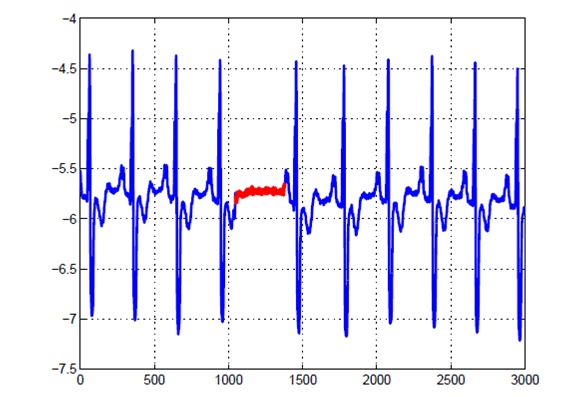Contextual and collective anomalies are defined as follows (source):
Contextual Anomalies. If a data instance is anomalous in a specific context (but not otherwise), then it is termed as a contextual anomaly (also referred to as conditional anomaly
Collective Anomalies. If a collection of related data instances is anomalous with respect to the entire data set, it is termed as a collective anomaly. The individual data instances in a collective anomaly may not be anomalies by themselves, but their occurrence together as a collection is anomalous.
Common example of collective anomalies I have seen are breakings of rythim in electrocardiograms
My question is, couldn't this also be seen as a set of contextual anomalies? As I see it, any data instance in the anomalous sequence is also a contextual anomaly (previous and next points are "too flat").
Is there an example of a collective anomaly that cannot be detected using algorithms for detection of contextual anomalies? What are the key differences one needs to consier when approaching contextual anomalies versus collective anomalies?

